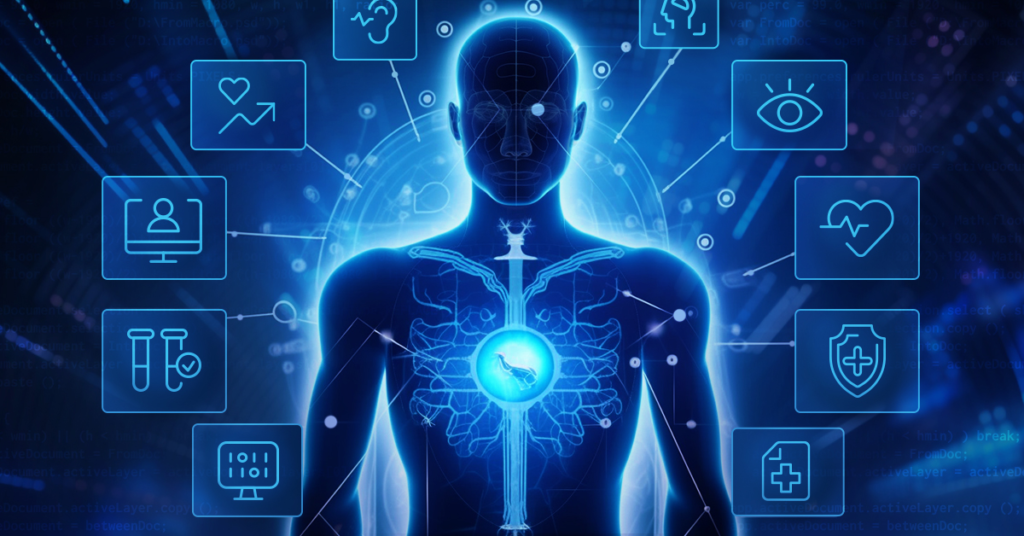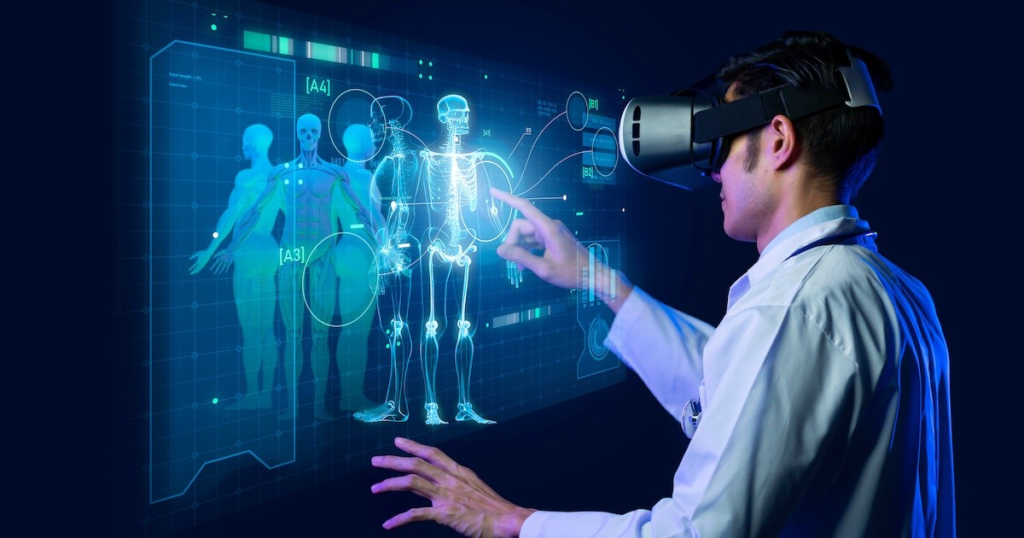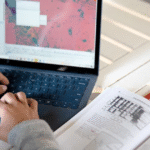Medical diagnosis has evolved dramatically over centuries, transitioning from ancient practices rooted in observation and superstition to highly sophisticated technologies driven by data and artificial intelligence. This transformation has revolutionized patient care, improved accuracy, and reduced mortality rates. Understanding the journey of medical diagnosis offers valuable insights into the progress of medical science and highlights the potential for future advancements.
Ancient Medical Diagnosis: Observation and Intuition

1. Early Diagnosis Through Observation
In ancient times, medical practitioners relied on careful observation of symptoms, bodily fluids, and patient behavior to identify illnesses. Egyptian, Indian, Chinese, and Greek physicians developed rudimentary diagnostic methods that laid the foundation for modern practices.
2. Egyptian Medicine: Divine Interpretation
Ancient Egyptian physicians combined empirical observation with spiritual beliefs. They attributed diseases to supernatural forces and relied on incantations, amulets, and prayers to appease the gods and restore health.
3. Ayurvedic and Traditional Chinese Medicine
Ayurveda, developed in ancient India, focused on balancing the body’s three doshas—Vata, Pitta, and Kapha. Diagnosis was based on pulse reading, tongue examination, and observation of bodily functions. Similarly, Traditional Chinese Medicine (TCM) used pulse diagnosis, tongue analysis, and the concept of Qi to detect imbalances and guide treatment.
4. Hippocratic Theory in Greek Medicine
Hippocrates, known as the “Father of Medicine,” introduced the theory of humors, which suggested that health depended on the balance of four bodily fluids—blood, phlegm, yellow bile, and black bile. Imbalances were believed to cause disease, leading to treatments aimed at restoring equilibrium.
The Middle Ages: Transition to Empirical Diagnosis
1. Influence of Religious Doctrine
During the Middle Ages, medical practices were heavily influenced by religious beliefs, often attributing illness to divine punishment or demonic possession. Diagnosis was largely intuitive, and treatments often involved prayer and penance.
2. Introduction of Physical Examination
The Renaissance period marked a shift toward empirical observation and systematic physical examination. Physicians began documenting symptoms and correlating them with internal pathology, laying the groundwork for more scientific diagnostic approaches.
The Renaissance and Early Modern Era: Anatomy and Pathology

1. Dissection and Anatomical Studies
The Renaissance ushered in a new era of scientific exploration, with pioneers like Andreas Vesalius conducting human dissections to understand anatomical structures. This knowledge enhanced diagnostic accuracy by linking symptoms to underlying anatomical changes.
2. Advances in Microscope Technology
The invention of the microscope by Antonie van Leeuwenhoek in the 17th century enabled the visualization of microorganisms and cellular structures, revolutionizing the understanding of infectious diseases and contributing to more precise diagnoses.
The 19th Century: Foundations of Modern Diagnosis
1. Development of Clinical Examination Techniques
Physicians such as René Laennec, who invented the stethoscope, introduced systematic methods of clinical examination. Techniques like auscultation, percussion, and palpation became standard practice, enhancing the accuracy of diagnoses.
2. Germ Theory and Bacteriology
Louis Pasteur and Robert Koch’s germ theory of disease established that microorganisms cause infections. This discovery led to the identification of pathogens and paved the way for diagnostic microbiology and vaccination.
3. Introduction of Laboratory Testing
The 19th century also witnessed the integration of laboratory testing, including blood and urine analysis, enabling objective assessment of biochemical and physiological changes in the body.
The 20th Century: Technological Advancements in Diagnosis
1. Radiology and Imaging Techniques
The discovery of X-rays by Wilhelm Roentgen revolutionized diagnostic imaging. Over the 20th century, advancements such as ultrasound, computed tomography (CT), magnetic resonance imaging (MRI), and positron emission tomography (PET) enabled non-invasive visualization of internal structures.
2. Introduction of Electrocardiography (ECG)
The development of the electrocardiogram (ECG) by Willem Einthoven allowed for the diagnosis of heart conditions by recording electrical activity. It became a cornerstone of cardiology and remains an essential diagnostic tool.
3. Biochemical and Genetic Testing
The latter half of the 20th century witnessed a surge in biochemical testing, immunoassays, and genetic testing, allowing for early detection of diseases, identification of hereditary disorders, and personalized treatment plans.
The 21st Century: Digital Revolution and AI in Diagnosis
1. Electronic Health Records (EHRs)
The adoption of electronic health records (EHRs) streamlined data management, enabling physicians to access comprehensive patient histories, laboratory results, and diagnostic reports efficiently.
2. Artificial Intelligence and Machine Learning
AI-driven diagnostic tools analyze vast datasets to identify patterns and assist in diagnosing complex conditions. Algorithms are now used in radiology, pathology, and dermatology to enhance diagnostic accuracy and reduce human error.
3. Genomic and Precision Medicine
Advancements in genomic sequencing have paved the way for precision medicine, where treatments are tailored to an individual’s genetic profile. Genomic data analysis helps diagnose rare diseases and predict patient responses to specific therapies.
4. Wearable Technology and Remote Monitoring
Wearable devices that monitor vital signs, such as heart rate, blood pressure, and glucose levels, provide real-time data that helps in early detection of health anomalies. Remote monitoring enhances chronic disease management and preventive care.
The Future of Medical Diagnosis: Innovations and Challenges

1. Integration of AI and Big Data
AI-powered platforms capable of analyzing big data will further improve diagnostic accuracy, detect trends, and predict disease outbreaks. However, ensuring data privacy and avoiding algorithmic bias remain challenges.
2. Expansion of Point-of-Care Testing
Point-of-care testing (POCT) technologies will continue to advance, allowing for rapid diagnosis in remote settings and resource-limited areas, improving global healthcare accessibility.
3. Personalized Medicine and Pharmacogenomics
Future diagnostics will be increasingly personalized, with pharmacogenomics enabling the selection of medications based on a patient’s genetic makeup, minimizing adverse effects and optimizing treatment outcomes.
Also Read : Strategies To Bypass The Medicaid 5-Year Lookback Requirement
Conclusion
The evolution of medical diagnosis has been marked by remarkable progress—from ancient practices based on intuition and observation to modern technologies driven by data and artificial intelligence. Each advancement has contributed to improving diagnostic accuracy, reducing mortality, and enhancing patient outcomes. As technology continues to evolve, the future holds immense potential for more personalized, accessible, and efficient healthcare.
FAQs on Medical Diagnosis Evolution
1. How did ancient doctors diagnose diseases?
Ancient doctors relied on observing symptoms, examining bodily fluids, and using spiritual interpretations to diagnose illnesses.
2. What was the significance of the microscope in medical diagnosis?
The microscope enabled the visualization of microorganisms, revolutionizing the understanding of infectious diseases and enhancing diagnostic accuracy.
3. How has artificial intelligence improved medical diagnosis?
AI analyzes vast datasets, detects patterns, and assists in diagnosing complex conditions with greater accuracy, reducing human error.
4. What role does genomic medicine play in modern diagnostics?
Genomic medicine allows for personalized treatment plans by identifying genetic factors that influence disease susceptibility and treatment responses.
5. How do wearable devices contribute to medical diagnosis?
Wearable devices monitor vital signs in real time, enabling early detection of anomalies and improving chronic disease management.




